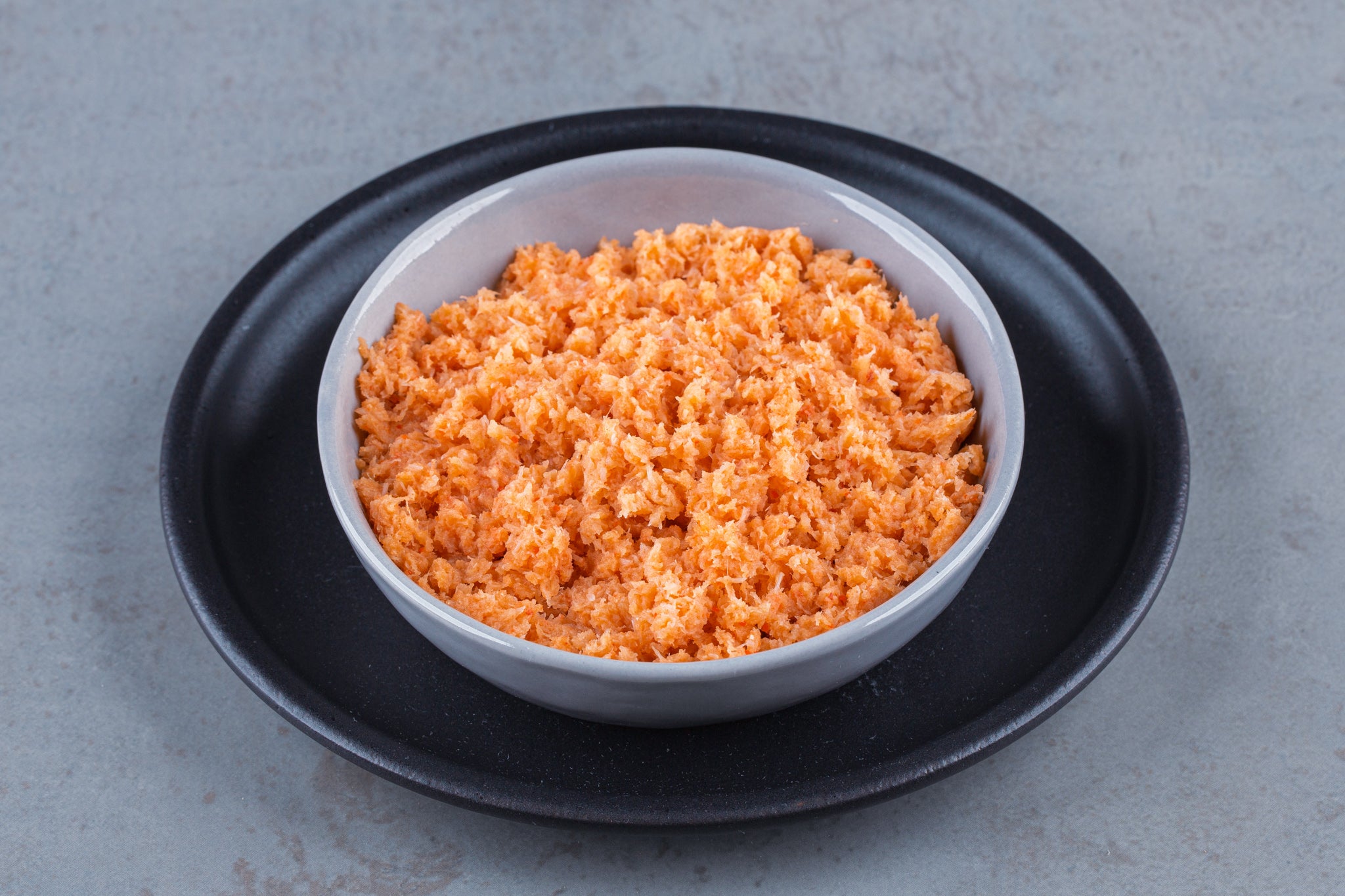
The Maine Lobster Marketing Collaborative aims to get every bit of value out of the tasty crustacean.
Those bits are called “mince,” and they make for great ingredients in ready-to-eat foods, said the collaborative’s executive director, Marianne LaCroix.
“We’re looking at ways to use underutilized parts, especially the mince — the little bits of meat that come out of the body and flippers when the lobster is processed,” she said.
Plenty of consumers, she said, are familiar with cooked whole lobster and with processed parts such as frozen lobster tails as main-course highlights.
Lobster mince, she said, can be used as an ingredient in prepared products such as lobster butter.
Earlier this month, the collaborative rolled out a new product called Maine Lobster Butter in partnership with myseafood.com, a seafood online marketplace in New Bedford, Mass.
In its marketing campaign, the collaborative noted the butter joins other ready-to-eat products such as myseafood.com’s Maine Lobster Mac & Cheese Bites, Luke’s Lobster’s Lobster Cakes and Hancock Gourmet Lobster Co.’s Lobster Cheeseburgers.
Courtesy / Maine Lobster Marketing Collaborative
A butter spread was developed this year by the Maine Lobster Marketing Collaborative and myseafood.com, a seafood online marketplace in New Bedford, Mass.
The collaborative began to develop the lobster butter idea about year ago, but plans slowed in 2020, said LaCroix.
This year, the collaborative initiated an “innovation project” to develop new ways to use lobster and brought the butter idea back, in partnership with myseafood.com.
The innovation project is looking at consumer trends, such as increasing demand for local products, and matching those trends with product ideas, she said.
For example, one idea is Maine lobster French fries — a combination of Maine-based potatoes and lobster mince to develop the fries.
“These are just ideas at this point,” she noted. “This fall we’ll do a couple of webinars to introduce them to food manufacturers. It’s a longer-term project.”
The collaborative this year also launched a product innovation guide that includes ideas for food manufacturers.
The guide includes information such as lobster’s nutritional value and a consumer preference survey that showed, for example, that more people would prefer lobster bisque compared with a shrimp bisque.
“In recent years, Maine lobster has been used more frequently as a versatile ingredient featured in innovative dishes like dumplings, pastas, quesadillas and fondue,” the guide says. “In fact, 56% of dishes with Maine lobster feature it as an ingredient in unique formats vs. as a standalone protein.”
In addition to lobster fries, the guide suggests the use of lobster in products such as breads, sausage, spreads and stuffing.
Marketing of the read-to-eat concept, LaCroix said, includes introduction of the guide to local lobster processors, digital advertising, and the webinars offered in partnership with an online business tool called SeafoodSource and a publication called Food Business News.
The campaign is focused on products to be sold to grocery stores, with an eventual expansion to restaurants.
The goal is to build the mince market.
“It’s being produced, but it doesn’t have a strong market,” she said. “It seems like a good market opportunity to add value to that part of the supply chain.”
She added, “We’re definitely hopeful that we’ll create some new demand just by inspiring new ways to use it. A lot of people might not even know it’s available. It gives manufacturers the opportunity to create products at a lower price point than the whole meat.”
Lobster marketing group to promote little-used ingredient for recipes - Mainebiz
Read More

No comments:
Post a Comment